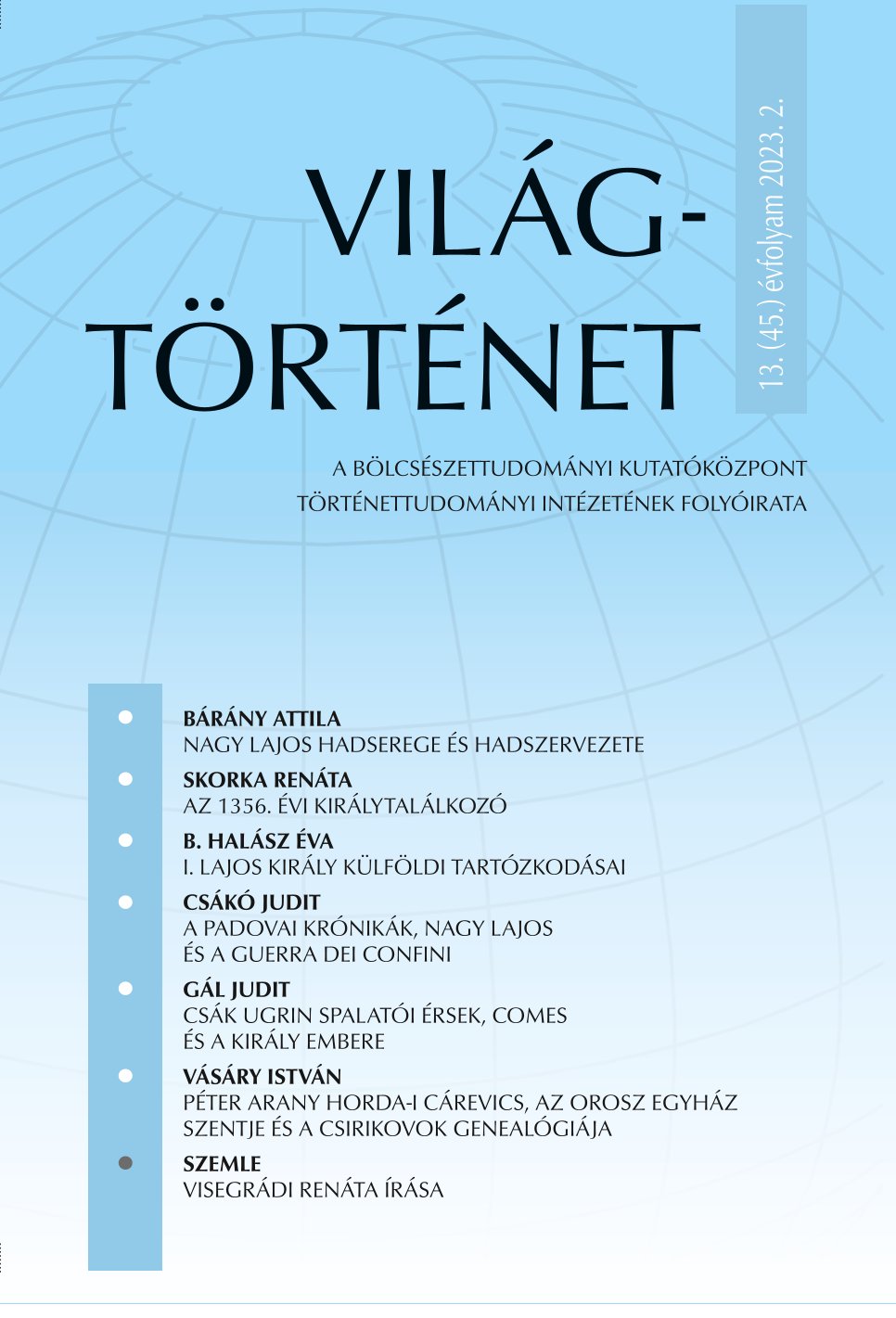Nagy Lajos hadserege és hadszervezete. Hadvezetés, stratégia, fegyvernemek
Military Administration and Army in King Louis I the Great’s Hungary: Leadership, Strategy, Branches of Warfare
Author(s): Attila BáránySubject(s): Military history, 13th to 14th Centuries
Published by: Magyar Tudományos Akadémia Bölcsészettudományi Kutatóközpont Történettudományi Intézet
Summary/Abstract: The article wishes to have an overview of the system of military organization in Hungary, in the reign of King Louis I (1342–1382). It is to give insight into the military machinery: obligation, logistics, reconnaissance, fortification warfare, the usage of terrain and weaponry. It examines formation, discipline and tactics as well as discusses branches: heavy cavalry, lightly armoured archers, and mainly foreign mercenary infantry. It has been widely held in historiography that a greatest innovation of the Angevins was the “banderial” army, that is, lords faithful to the new regime had a right now to lead their own, private contingents under their own family banners, banderium, the military unit being proposed as a novelty as well. Through the investigation of donation and prorogation charters, summonses, call-to-arms dispatches the organization of war can be seen clearer. Recent research has shown that it is not a novelty at all. The honor system, brought forward by the new dynasty meant a reform in the military organization: the territorial administration was based on military executive power assigned by the crown to “soldier barons”, on a temporary footing, particularly tied closely to its centres, castles. The banderium contingents were set up by holders of honores, obliged to mobilize any time all the arms-bearing men of the district. A campaign could have been led with forces of mixed composition: county noble troops, knights of the royal aula, light cavalrymen of privileged Cumans. For the eastern theatres of war, Louis mustered mass forces of lightly armed footmen and a variety of light cavalrymen from Vlachs to much more organized Székely horsemen. In certain cases they were supplemented with mainly paid royal household forces. The Nomadic-origin military personnel of the Cumans or Iasians were even employed in Western theatres of war. The Italian ventures were largely fought by regularly paid, semi-standing forces with a scrutinized budget and well-organized supply and even an in-field mobile treasury.
Journal: Világtörténet
- Issue Year: 2023
- Issue No: 2
- Page Range: 175-220
- Page Count: 46
- Language: Hungarian

